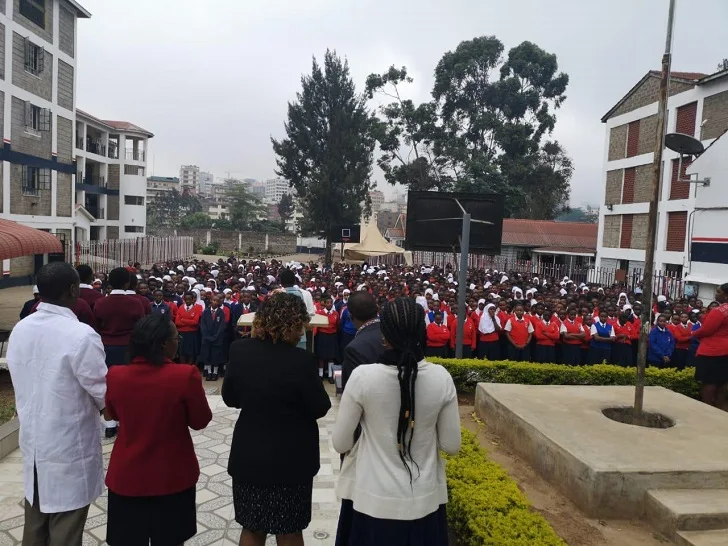The 63 million teachers affected by school closures during the COVID-19 crisis are playing a crucial role in ensuring that learning continues, often in difficult circumstances. Now the same teachers are on the front line of a new challenge: making sure that the reopening of schools goes smoothly.
Giving teachers the best chance of succeeding as they return to school means listening to their needs, protecting their safety and well-being, and helping them adapt their approaches to teaching and learning. These are the themes of new guidelines about school reopening by UNESCO, the International Labor Organization, and the Teacher Task Force.
For many countries whose education systems already struggle with teacher shortages or a lack of infrastructure, reopening schools is especially challenging. The guidelines recognize the necessity to identify priorities and make informed decisions through dialogue among all stakeholders, including teachers and their representative organizations.
The authors have identified ways to support teachers and education support staff during school reopening:
Ensure that teachers’ voices are heard in policy and planning
Dialogue is essential to develop effective strategies for school reopening at national, district and school levels. Such dialogue should include competent authorities, teachers’ representative organizations, parents, local communities, and students. It ensures that all needs are considered – including those of vulnerable and marginalized learners – when planning for school safety and developing teaching practices to resume classroom learning.
Guarantee that the school environment is safe for the whole school community
As schools reopen, the safety and well-being of learners and school staff is of paramount concern. Safe and healthy working conditions in schools are fundamental to decent work and critical for ensuring teachers and education support staff are motivated and effective during and after the pandemic. Measures to ensure safety and health in schools should be adapted to local contexts, following available guidelines and standards (such as the WHO considerations for school-related public health measures).
Recognize the importance of teachers’ and learners’ psychological, social and emotional well-being
The COVID-19 pandemic may result in psychological distress for teachers, students, and their families. If stress and trauma are not detected and not addressed, they may cause long-term harm to learning and overall well-being. For teachers, this can lead to burnout, resulting in high rates of absenteeism and even in teachers leaving their jobs. School leaders need to ensure that teachers and education support staff receive ongoing psychosocial support. This is critical for teachers who also need to provide support to students and families.
Help teachers adapt to the new normal as they resume classroom teaching
Teachers and education support staff need to be given adequate support and resources to resume life in the classroom, and in many cases to provide remedial teaching. Such support is particularly important where additional strain may be placed on teachers’ available time. For instance, some teachers could be asked to simultaneously continue both face-to-face and online education, and others to complete double shifts to keep class sizes down to allow for physical distancing.
Make sure there are enough teachers, working in the right conditions
Despite the exceptional circumstances, it is crucial that teachers and education support staff enjoy decent working standards, are paid on time, and are granted sick leave if they need it. If the return to school uses a staggered approach, or if some children continue learning remotely, it may reveal gaps in human resources and create complex working schedules and routines. Where education budgets and systems are under strain, it is vital that decision-makers do not reduce current and capital investments, jeopardizing teachers’ rights and working conditions.
Maintain or increase financial resources
Teacher’s salaries and benefits constitute the largest recurrent cost in education budgets in most countries, especially low-income economies. As a result of the COVID-19 crisis, available resources may decrease if national incomes continue to contract. To ensure learning continuity, education authorities will need to invest in teachers and education support staff, not only to maintain salaries but also to provide essential training and psychosocial support. It is important that governments resist policy trade-offs and practices, which could harm the teaching profession and education quality, such as increasing teaching hours or recruiting untrained teachers. Governments should also encourage private providers to maintain regular salary payments to teachers and other support staff.
Monitor the situation and include teachers in the feedback
As schools reopen, it is critical to monitor and evaluate the situation and adapt as necessary. Ministries of education, decentralized authorities, and school leaders need to develop monitoring and evaluation frameworks for measuring and benchmarking progress as schools reopen. These frameworks should take into account teachers’ roles in providing quality teaching and fostering a favorable learning environment. They should also allow teachers to inform monitoring and evaluation mechanisms, as well as being kept abreast of progress and results.
We know that many parents around the world, with their children at home due to school closures, have come to a deep appreciation of the critical work that teachers accomplish every day in their classrooms. Let’s make sure we give those teachers the tools and support they need when schools reopen to continue guiding the next generations of children toward learning.
As seen in globalpartnership.org/
